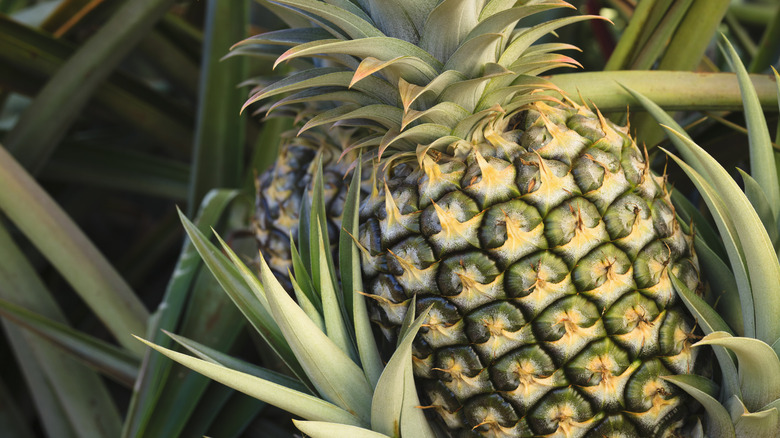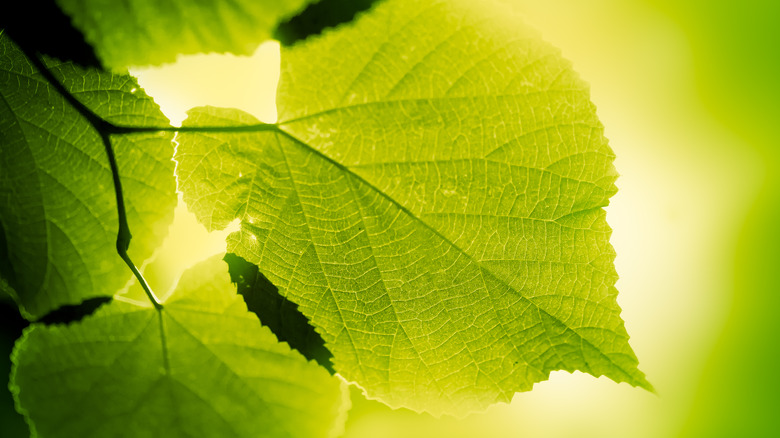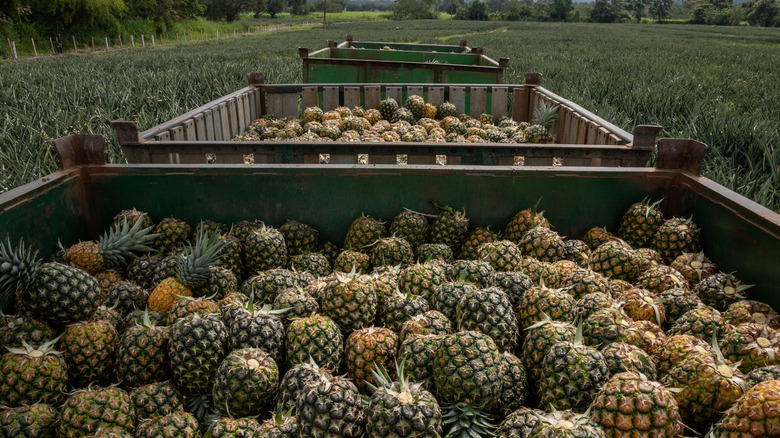The Scientific Reason Fresh Pineapples Are Sweeter In The Morning
Pineapples have a rich history, enjoyed across the world for quite some time (who doesn't love grilled pineapple?) — but they have also led to some pretty controversial food combos, like putting it on pizza (no judgment here). Some love the fruit, and others despise it. However, no matter your opinion on it, if you've ever tried pineapple before, you might notice a difference in, well, different samples. Some pineapples tend to be sweeter than others — whereas certain pineapples might be sour.
Although it may appear to be something as simple as the pineapple wasn't ripe enough, or maybe there were some additives in the sweeter pineapple, there's a natural phenomenon that explains the disparity in taste. Namely, the reason boils down to crassulacean acid metabolism, otherwise known as CAM photosynthesis. If pineapples are picked during the day, they'll be sweeter than the tart ones picked at night. This process might seem, well, unusual, but it is common in a variety of plants, including pineapples — and the way it works might be cooler than you think. But to fully understand the process, a little thing or two about pineapples needs to be addressed.
The Calvin Cycle
We all probably have some general knowledge about how a pineapple gets its energy. Like all plants, energy from the sunlight beams down to Earth, and plants collect that energy via photosynthesis. However, how they turn that energy into glucose, or another absorbable energy, is done through the Calvin Cycle. In the Calvin Cycle, carbon dioxide combines with a ribulose-1,5-bisphosphate (RuBP) molecule, which eventually gets split into two molecules of 3-phosphoglyceric acid (3-PGA). These are used later to create glucose.
ATP and NADPH, energy from the sun, then enter the process by converting the 3-PGA molecules into glyceraldehyde-3-phosphate (G3P). Finally, at the end of the Calvin Cycle, the 3GP molecules are used to form glucose and recycle the energy needed to regenerate the RuBP acceptor molecule at the beginning of this process. However, this isn't always efficient, and sometimes the oxygen from the carbon dioxide molecule is accepted by the RuBP molecule instead of the carbon, wasting the carbon and halting energy production.
Pineapples and CAM plants
This process is called photorespiration, and it's one of the most common reasons plants die out during droughts or seasons with high temperatures. For plants and crops in warmer regions, this can pose a serious threat, hence why nature conjured up a solution. Some plants, like pineapples, undergo CAM photosynthesis. Unlike other plants, pineapples open their stomata at night and close them during the day. This allows pineapples to take in carbon dioxide for energy purposes and conserve water simultaneously.
Once the carbon dioxide is inside the pineapple's cells, the molecule is transformed into malate, an organic acid. When daytime comes around, this organic acid is released from the vacuole into the Calvin Cycle, creating energy without releasing the pineapple's stomata. Therefore, if you harvest a pineapple at night time, the fruit will be coated with an organic acid, which makes it more sour compared to one picked during the day. And wallah! Now if you are ever curious as to why some pineapple tastes different than others, you can thank Mother Nature and all her magic that's at work.



